Darknet with CUDA: Train YOLO Model for QR Code Detection on Windows
In my previous article, I shared how to integrate Dynamsoft Barcode Reader to LabelImg for annotating barcode objects. It is time to take a further step to make some custom models for barcodes. In this article, I will go through the process that I used Darknet to train YOLO v3 models for QR code detection.
About Darknet and YOLO
Building Darknet on Windows
Let’s get the source code of Darknet:
git clone https://github.com/AlexeyAB/darknet --depth 1
To build Darknet on Windows, we have to install the following tools beforehand:
- CMake 3.18.4
- Visual Studio 2019 Community edition
- OpenCV 4.5.0. Add “OpenCV_DIR = C:\opencv\build” to system environment variables and add “C:\opencv\build\x64\vc15\bin” to PATH.
- CUDA 10.1. Copy C:\Program Files\NVIDIA GPU Computing Toolkit\CUDA\v10.1\extras\visual_studio_integration\MSBuildExtensions to C:\Program Files (x86)\Microsoft Visual Studio\2019\Community\MSBuild\Microsoft\VC\v160\BuildCustomizations
- cuDNN 7.6.5. Copy cuda\bin*.dll to NVIDIA GPU Computing Toolkit\CUDA\v10.1\bin. Copy cuda\include*.h to NVIDIA GPU Computing Toolkit\CUDA\v10.1\include. Copy cuda\lib\x64*.lib to NVIDIA GPU Computing Toolkit\CUDA\v10.1\lib.
Note: NVIDIA CUDA Visual Studio Integration may not be installed to the expected Visual Studio directory if you have multiple editions of the VC++ toolset installed. If the integration is not installed in C:\Program Files (x86)\Microsoft Visual Studio\2019\Community\MSBuild\Microsoft\VC\v160\BuildCustomizations, CMake will fail to find the CUDA compiler even though the “nvcc” command can work.
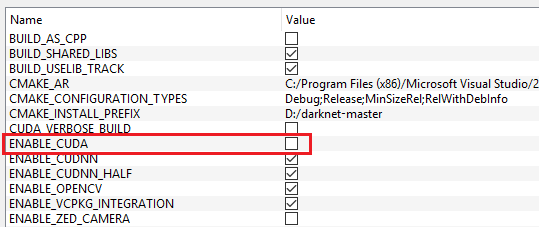
When running the build.ps1 script file in PowerShell first time, you will see a security warning.

If the PowerShell script file fails to run, you need to re-open PowerShell as administrator and change the security policy:
> Set-ExecutionPolicy Bypass
> build.ps1
Once the build is done, you can check the status of Darknet.
CPU edition
> darknet.exe detector test
GPU isn't used
Used AVX
Used FMA & AVX2
GPU edition
> darknet.exe detector test
CUDA-version: 10010 (10010), cuDNN: 7.6.5, CUDNN_HALF=1, GPU count: 1
CUDNN_HALF=1
Training YOLO v3 Model for QR Code
Now, let’s get our hands dirty to train a model for QR code detection. If you don’t have GPU, skip this section, for training with CPU is a nightmare.
QR code images and label files
For saving time, I only prepared about 250 QR code images and corresponding label files generated by labelImg. The more data you train, the more accurate the model will be.
I created a new folder named qrcode and copy all training files to the folder.
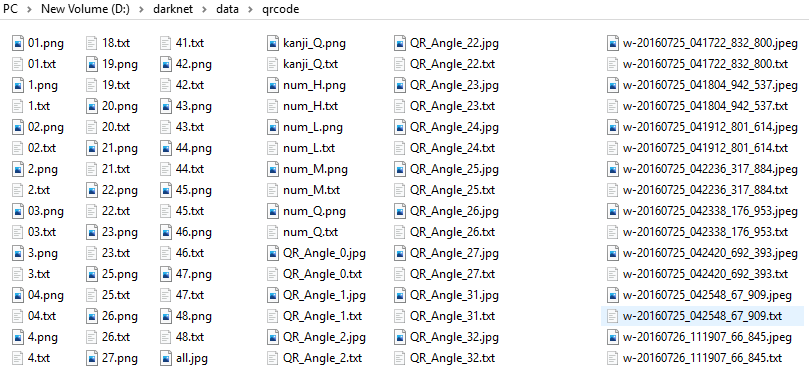
In the same way, I created a new folder darknet\data\qrcode-valid and copied a bunch of files to the folder for model validation.
Configuration files
Before training models, I created some config files including qrcode.data, qrcode.txt, qrcode-valid.txt, qrcode.names, qrcode-yolo3v.cfg and qrcode-yolov3-tiny.cfg.
The qrcode.data file contains the dataset information:
classes = 1
train = data/qrcode.txt
valid = data/qrcode-valid.txt
names = data/qrcode.names
backup = backup/
The qrcode.txt and qrcode-valid.txt are auto-generated by the Python script https://github.com/theAIGuysCode/YoloGenerateTrainingFile/blob/master/generate_train.py.
The qrcode.names file includes the class names. I only have one class QR_CODE.
The qrcode-yolo3v.cfg and qrcode-yolov3-tiny.cfg are based on data\yolov3.cfg and data\yolov3-tiny.cfg.
According to the online documentation https://github.com/AlexeyAB/darknet#how-to-train-to-detect-your-custom-objects, I changed some parameters as follows:
classes=1
filters=18
max_batches = 4000
steps=3200,3600
Weight file and training command
Download darknet53.conv.74 to train the model:
> darknet.exe detector train data/qrcode.data cfg/qrcode-yolov3.cfg darknet53.conv.74
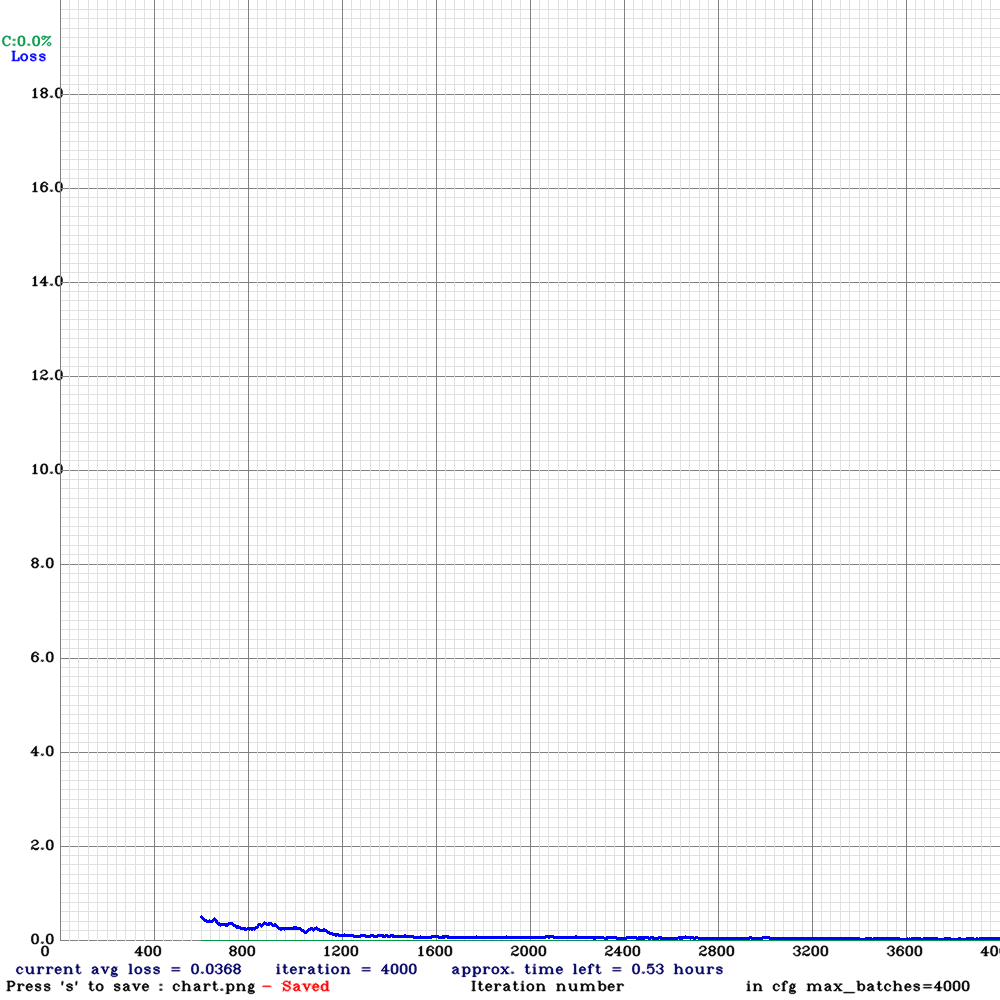
YOLOv3
darknet.exe detector train data/qrcode.data cfg/qrcode-yolov3-tiny.cfg darknet53.conv.74
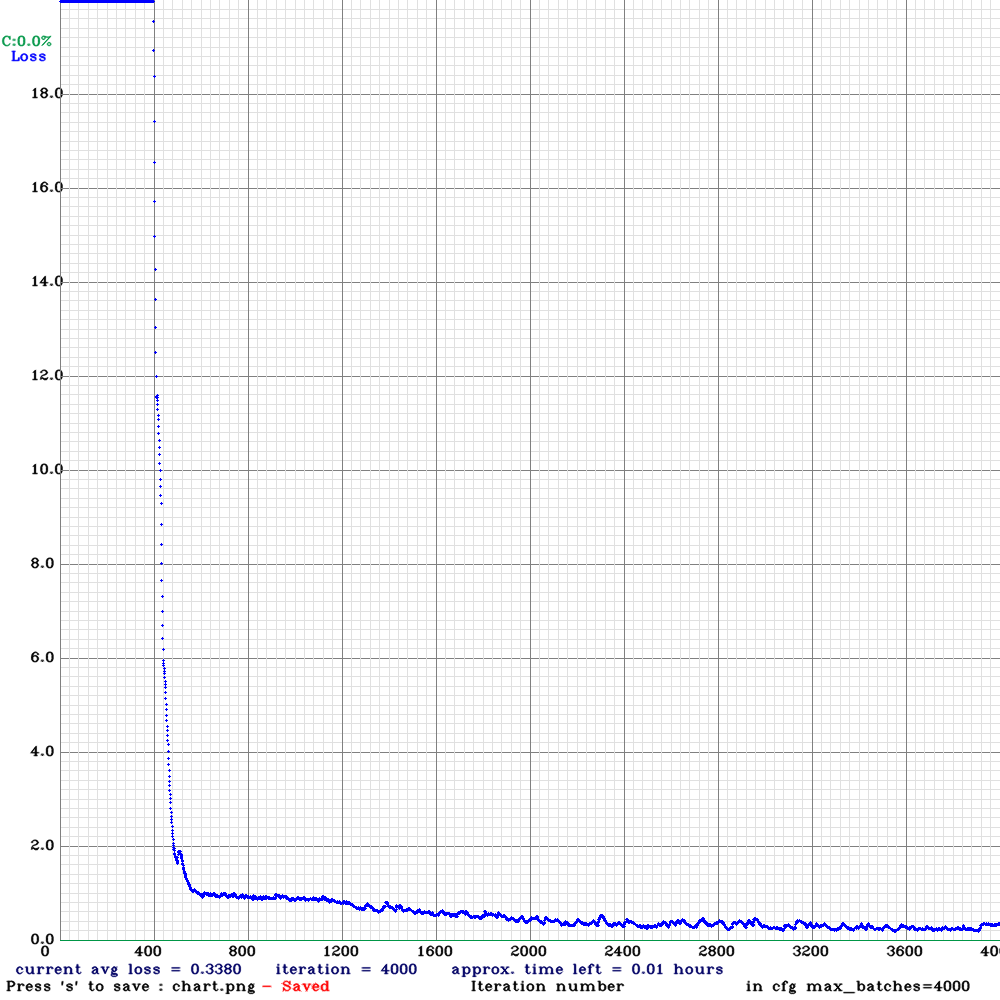
YOLOv3-Tiny
Performance Test: CPU vs GPU
After successfully training the model, I made a quick test with the QR code image captured by my cellphone.
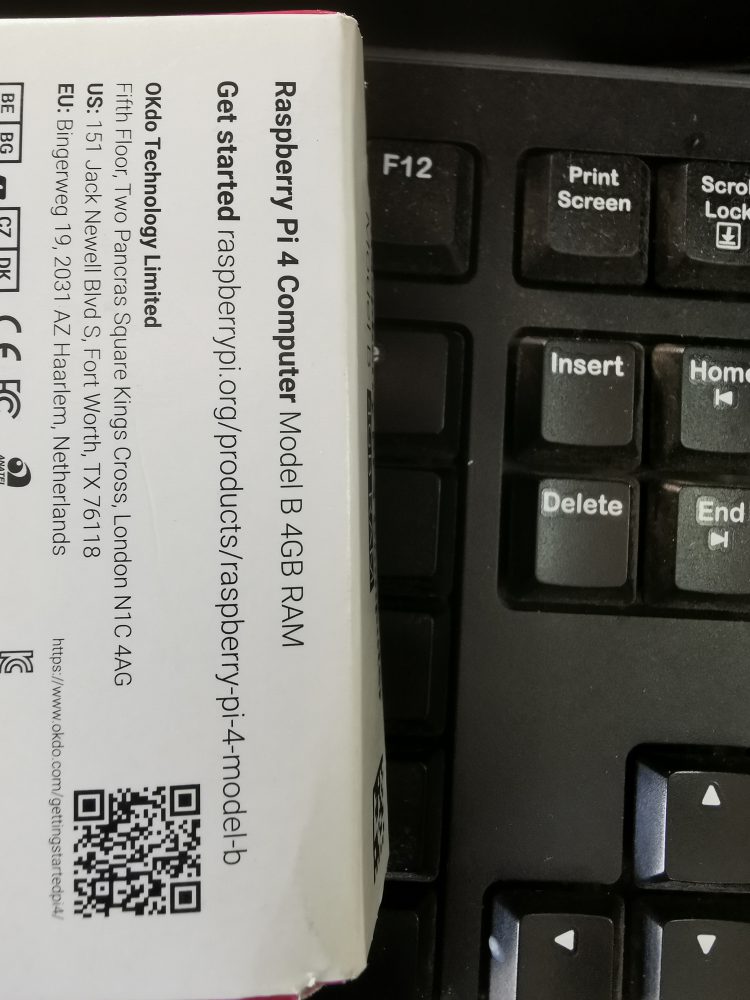
Hardware
GPU: NVIDIA RTX2060
CPU: Intel(R) Core(TM) i5-4460 CPU @ 3.20GHz, 3201 Mhz, 4 Core(s), 4 Logical Processor(s)
YOLOv3-tiny Test
Run the command:
darknet.exe detector test qrcode.data qrcode-yolov3-tiny.cfg qrcode-yolov3-tiny_last.weights 20201105151910.jpg
CPU
Done! Loaded 24 layers from weights-file
Detection layer: 16 - type = 28
Detection layer: 23 - type = 28
20201105151910.jpg: Predicted in 160.487000 milli-seconds.
QR_CODE: 97%
GPU
Done! Loaded 24 layers from weights-file
Detection layer: 16 - type = 28
Detection layer: 23 - type = 28
20201105151910.jpg: Predicted in 3.717000 milli-seconds.
QR_CODE: 97%
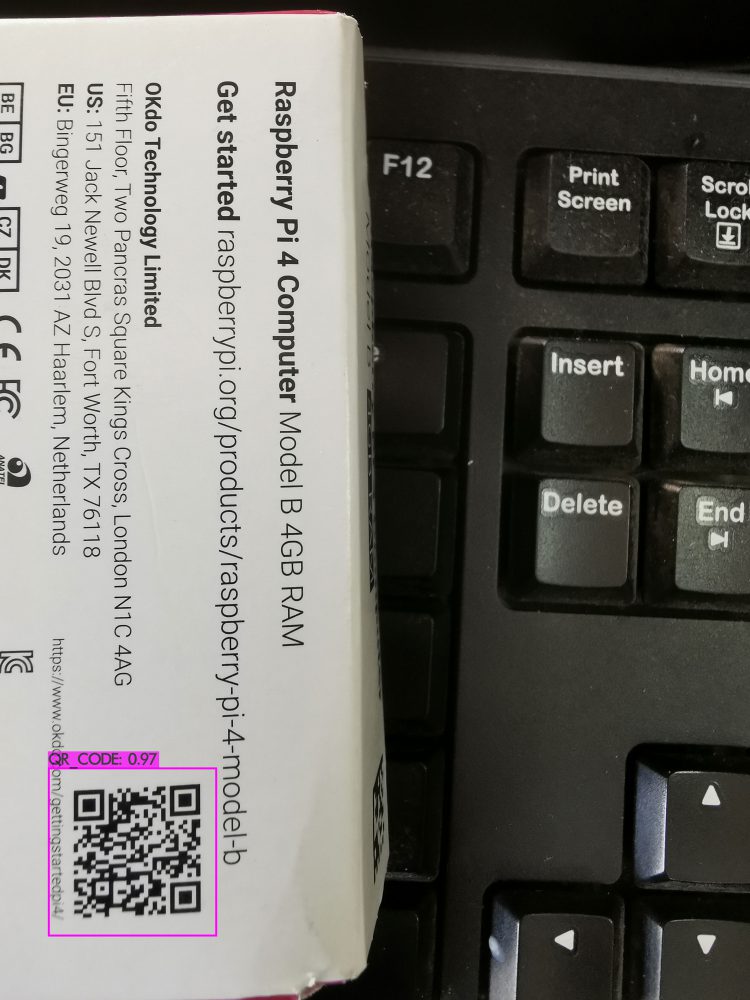
YOLOv3 Test
Run the command:
darknet.exe detector test qrcode.data qrcode-yolov3.cfg qrcode-yolov3_last.weights 20201105151910.jpg
CPU
Done! Loaded 107 layers from weights-file
Detection layer: 82 - type = 28
Detection layer: 94 - type = 28
Detection layer: 106 - type = 28
20201105151910.jpg: Predicted in 3322.188000 milli-seconds.
QR_CODE: 100%
GPU
Done! Loaded 107 layers from weights-file
Detection layer: 82 - type = 28
Detection layer: 94 - type = 28
Detection layer: 106 - type = 28
20201105151910.jpg: Predicted in 31.717000 milli-seconds.
QR_CODE: 100%
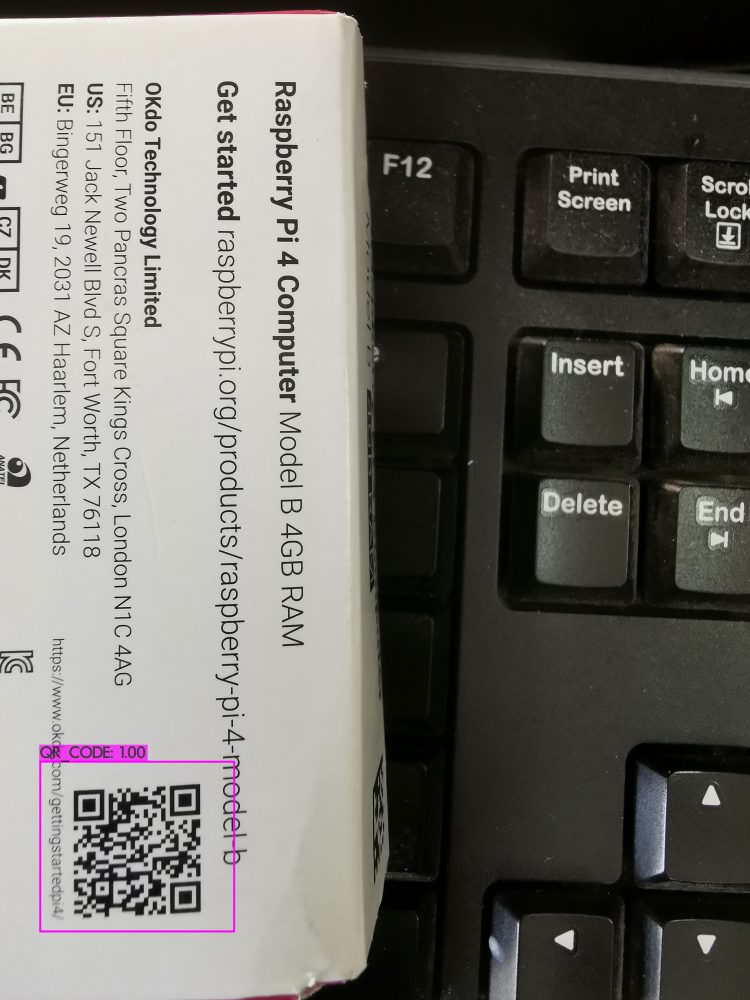
Download Pre-trained YOLO v3 Model for QR Code Detection
If you are interested in QR code detection, you can try my models.


